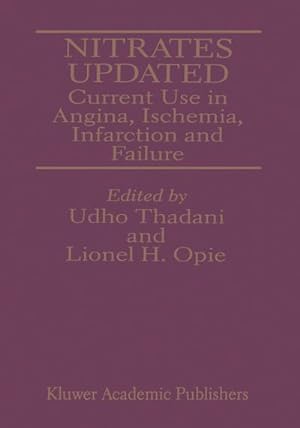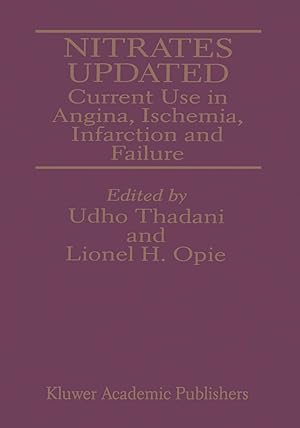thadani udho (16 resultados)
ComentariosFiltros de búsqueda
Tipo de artículo
- Todos los tipos de productos
- Libros (16)
- Revistas y publicaciones (No hay ningún otro resultado que coincida con este filtro.)
- Cómics (No hay ningún otro resultado que coincida con este filtro.)
- Partituras (No hay ningún otro resultado que coincida con este filtro.)
- Arte, grabados y pósters (No hay ningún otro resultado que coincida con este filtro.)
- Fotografías (No hay ningún otro resultado que coincida con este filtro.)
- Mapas (No hay ningún otro resultado que coincida con este filtro.)
- Manuscritos y coleccionismo de papel (No hay ningún otro resultado que coincida con este filtro.)
Condición Más información
- Nuevo (13)
- Como nuevo, Excelente o Muy bueno (2)
- Bueno o Aceptable (1)
- Regular o Pobre (No hay ningún otro resultado que coincida con este filtro.)
- Tal como se indica (No hay ningún otro resultado que coincida con este filtro.)
Encuadernación
Más atributos
- Primera edición (No hay ningún otro resultado que coincida con este filtro.)
- Firmado (No hay ningún otro resultado que coincida con este filtro.)
- Sobrecubierta (No hay ningún otro resultado que coincida con este filtro.)
- Con imágenes (6)
- No impresión bajo demanda (12)
Idioma (1)
Gastos de envío gratis
- Envío gratis a España (No hay ningún otro resultado que coincida con este filtro.)
Ubicación del vendedor
Valoración de los vendedores
-
Nitrates Updated: Current Use in Angina, Ischemia, Infarction and Failure
Librería: Zubal-Books, Since 1961, Cleveland, OH, Estados Unidos de America
EUR 4,45
Convertir monedaEUR 20,72 gastos de envío desde Estados Unidos de America a EspañaCantidad disponible: 1 disponibles
Añadir al carritoCondición: Good. 224 pp., paperback, ex library, else textually clean and tight. - If you are reading this, this item is actually (physically) in our stock and ready for shipment once ordered. We are not bookjackers. Buyer is responsible for any additional duties, taxes, or fees required by recipient's country.
-
EUR 136,16
Convertir monedaEUR 19,49 gastos de envío desde Alemania a EspañaCantidad disponible: Más de 20 disponibles
Añadir al carritoCondición: New.
-
Nitrates Updated: Current Use in Angina, Ischemia, Infarction and Failure
Librería: Ria Christie Collections, Uxbridge, Reino Unido
EUR 158,59
Convertir monedaEUR 5,15 gastos de envío desde Reino Unido a EspañaCantidad disponible: Más de 20 disponibles
Añadir al carritoCondición: New. In.
-
Nitrates Updated: Current Use in Angina, Ischemia, Infarction and Failure
Librería: Ria Christie Collections, Uxbridge, Reino Unido
EUR 164,62
Convertir monedaEUR 5,15 gastos de envío desde Reino Unido a EspañaCantidad disponible: Más de 20 disponibles
Añadir al carritoCondición: New. In.
-
Nitrates Updated : Current Use in Angina, Ischemia, Infarction and Failure
Publicado por Springer US, Springer New York, 2011
ISBN 10: 1461284341 ISBN 13: 9781461284345
Idioma: Inglés
Librería: AHA-BUCH GmbH, Einbeck, Alemania
EUR 164,49
Convertir monedaEUR 11,99 gastos de envío desde Alemania a EspañaCantidad disponible: 1 disponibles
Añadir al carritoTaschenbuch. Condición: Neu. Druck auf Anfrage Neuware - Printed after ordering - Nitrates remain among the most commonly used therapeutic agents in cardiology. That they can re lieve pain in angina pectoris has been known at least since 1867, when Lauder Brunton described their clinical use. Now, almost 130 years later, we are constantly learning more about their optimal use in anginal syndromes. For example, there is no doubt that nitrate tolerance occurs, but equally no doubt that certain drug dosages help to attenuate such toler ance. Thus, our understanding of nitrate tolerance has been taken further by the advent of new nitrate preparations and by studies at a basic science level. The current intense interest in nitrates has been rekindled by the growing emphasis on the role of the endothelium in the production of nitric oxide, a basic cardiovascular regulator. If nitric oxide is vasodilator and protects the vascular endothelium, then nitrates should also have similar properties. Hence this book starts off with the role of the endothelium and ni trates in vasodilation. Next, the mechanisms of ac tion of nitrates are considered with emphasis on the role of cyclic GMP. The chief limitation to the use of nitrates lies in nitrate tolerance. After carefully looking at all the evidence, the authors of the third chapter conclude that the mechanism is likely to be multifactorial. The mechanism responsible for the tolerance still remains unknown. In vitro tolerance may be due to enhanced production of vascular superoxide [1].
-
Nitrates Updated: Current Use in Angina, Ischemia, Infarction and Failure
Librería: moluna, Greven, Alemania
EUR 178,14
Convertir monedaEUR 19,49 gastos de envío desde Alemania a EspañaCantidad disponible: Más de 20 disponibles
Añadir al carritoGebunden. Condición: New.
-
EUR 215,14
Convertir monedaEUR 9,93 gastos de envío desde Estados Unidos de America a EspañaCantidad disponible: 4 disponibles
Añadir al carritoCondición: New. pp. 236 Index.
-
Nitrates Updated: Current Use in Angina, Ischemia, Infarction and Failure
Librería: Lucky's Textbooks, Dallas, TX, Estados Unidos de America
EUR 158,73
Convertir monedaEUR 64,74 gastos de envío desde Estados Unidos de America a EspañaCantidad disponible: Más de 20 disponibles
Añadir al carritoCondición: New.
-
Nitrates Updated: Current Use in Angina, Ischemia, Infarction and Failure
Librería: Lucky's Textbooks, Dallas, TX, Estados Unidos de America
EUR 158,73
Convertir monedaEUR 64,74 gastos de envío desde Estados Unidos de America a EspañaCantidad disponible: Más de 20 disponibles
Añadir al carritoCondición: New.
-
Nitrates Updated : Current Use in Angina, Ischemia, Infarction and Failure
Librería: AHA-BUCH GmbH, Einbeck, Alemania
EUR 247,94
Convertir monedaEUR 11,99 gastos de envío desde Alemania a EspañaCantidad disponible: 2 disponibles
Añadir al carritoBuch. Condición: Neu. Neuware - Nitrates remain among the most commonly used therapeutic agents in cardiology. That they can re lieve pain in angina pectoris has been known at least since 1867, when Lauder Brunton described their clinical use. Now, almost 130 years later, we are constantly learning more about their optimal use in anginal syndromes. For example, there is no doubt that nitrate tolerance occurs, but equally no doubt that certain drug dosages help to attenuate such toler ance. Thus, our understanding of nitrate tolerance has been taken further by the advent of new nitrate preparations and by studies at a basic science level. The current intense interest in nitrates has been rekindled by the growing emphasis on the role of the endothelium in the production of nitric oxide, a basic cardiovascular regulator. If nitric oxide is vasodilator and protects the vascular endothelium, then nitrates should also have similar properties. Hence this book starts off with the role of the endothelium and ni trates in vasodilation. Next, the mechanisms of ac tion of nitrates are considered with emphasis on the role of cyclic GMP. The chief limitation to the use of nitrates lies in nitrate tolerance. After carefully looking at all the evidence, the authors of the third chapter conclude that the mechanism is likely to be multifactorial. The mechanism responsible for the tolerance still remains unknown. In vitro tolerance may be due to enhanced production of vascular superoxide [1].
-
Nitrates Updated: Current Use in Angina, Ischemia, Infarction and Failure
Librería: Mispah books, Redhill, SURRE, Reino Unido
EUR 244,76
Convertir monedaEUR 28,70 gastos de envío desde Reino Unido a EspañaCantidad disponible: 1 disponibles
Añadir al carritoPaperback. Condición: Like New. Like New. book.
-
Nitrates Updated: Current Use in Angina, Ischemia, Infarction and Failure
Librería: Mispah books, Redhill, SURRE, Reino Unido
EUR 255,40
Convertir monedaEUR 28,70 gastos de envío desde Reino Unido a EspañaCantidad disponible: 1 disponibles
Añadir al carritoPaperback. Condición: Like New. Like New. book.
-
Nitrates Updated
Librería: BuchWeltWeit Ludwig Meier e.K., Bergisch Gladbach, Alemania
EUR 160,49
Convertir monedaEUR 11,00 gastos de envío desde Alemania a EspañaCantidad disponible: 2 disponibles
Añadir al carritoTaschenbuch. Condición: Neu. This item is printed on demand - it takes 3-4 days longer - Neuware -Nitrates remain among the most commonly used therapeutic agents in cardiology. That they can re lieve pain in angina pectoris has been known at least since 1867, when Lauder Brunton described their clinical use. Now, almost 130 years later, we are constantly learning more about their optimal use in anginal syndromes. For example, there is no doubt that nitrate tolerance occurs, but equally no doubt that certain drug dosages help to attenuate such toler ance. Thus, our understanding of nitrate tolerance has been taken further by the advent of new nitrate preparations and by studies at a basic science level. The current intense interest in nitrates has been rekindled by the growing emphasis on the role of the endothelium in the production of nitric oxide, a basic cardiovascular regulator. If nitric oxide is vasodilator and protects the vascular endothelium, then nitrates should also have similar properties. Hence this book starts off with the role of the endothelium and ni trates in vasodilation. Next, the mechanisms of ac tion of nitrates are considered with emphasis on the role of cyclic GMP. The chief limitation to the use of nitrates lies in nitrate tolerance. After carefully looking at all the evidence, the authors of the third chapter conclude that the mechanism is likely to be multifactorial. The mechanism responsible for the tolerance still remains unknown. In vitro tolerance may be due to enhanced production of vascular superoxide [1]. 236 pp. Englisch.
-
Nitrates Updated
Publicado por Springer US, Springer New York Sep 2011, 2011
ISBN 10: 1461284341 ISBN 13: 9781461284345
Idioma: Inglés
Librería: buchversandmimpf2000, Emtmannsberg, BAYE, Alemania
EUR 160,49
Convertir monedaEUR 35,00 gastos de envío desde Alemania a EspañaCantidad disponible: 1 disponibles
Añadir al carritoTaschenbuch. Condición: Neu. This item is printed on demand - Print on Demand Titel. Neuware -Nitrates remain among the most commonly used therapeutic agents in cardiology. That they can re lieve pain in angina pectoris has been known at least since 1867, when Lauder Brunton described their clinical use. Now, almost 130 years later, we are constantly learning more about their optimal use in anginal syndromes. For example, there is no doubt that nitrate tolerance occurs, but equally no doubt that certain drug dosages help to attenuate such toler ance. Thus, our understanding of nitrate tolerance has been taken further by the advent of new nitrate preparations and by studies at a basic science level. The current intense interest in nitrates has been rekindled by the growing emphasis on the role of the endothelium in the production of nitric oxide, a basic cardiovascular regulator. If nitric oxide is vasodilator and protects the vascular endothelium, then nitrates should also have similar properties. Hence this book starts off with the role of the endothelium and ni trates in vasodilation. Next, the mechanisms of ac tion of nitrates are considered with emphasis on the role of cyclic GMP. The chief limitation to the use of nitrates lies in nitrate tolerance. After carefully looking at all the evidence, the authors of the third chapter conclude that the mechanism is likely to be multifactorial. The mechanism responsible for the tolerance still remains unknown. In vitro tolerance may be due to enhanced production of vascular superoxide [1].Springer Verlag GmbH, Tiergartenstr. 17, 69121 Heidelberg 236 pp. Englisch.
-
Nitrates Updated
Librería: Majestic Books, Hounslow, Reino Unido
EUR 228,51
Convertir monedaEUR 10,16 gastos de envío desde Reino Unido a EspañaCantidad disponible: 4 disponibles
Añadir al carritoCondición: New. Print on Demand pp. 236 66:B&W 7 x 10 in or 254 x 178 mm Perfect Bound on White w/Gloss Lam.
-
Nitrates Updated
Librería: Biblios, Frankfurt am main, HESSE, Alemania
EUR 229,95
Convertir monedaEUR 14,50 gastos de envío desde Alemania a EspañaCantidad disponible: 4 disponibles
Añadir al carritoCondición: New. PRINT ON DEMAND pp. 236.









